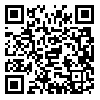Fri, Jan 10, 2025
[Archive]
Volume 3, Issue 1 (3-2013)
ASE 2013, 3(1): 343-355 |
Back to browse issues page
Download citation:
BibTeX | RIS | EndNote | Medlars | ProCite | Reference Manager | RefWorks
Send citation to:



BibTeX | RIS | EndNote | Medlars | ProCite | Reference Manager | RefWorks
Send citation to:
Saeedi, Kazemi. Stability of Three-Wheeled Vehicles with and without Control System. ASE 2013; 3 (1) :343-355
URL: http://www.iust.ac.ir/ijae/article-1-180-en.html
URL: http://www.iust.ac.ir/ijae/article-1-180-en.html
Abstract: (30024 Views)
In this study, stability control of a three-wheeled vehicle with two wheels on the front axle, a three-wheeled
vehicle with two wheels on the rear axle, and a standard four-wheeled vehicle are compared. For vehicle
dynamics control systems, the direct yaw moment control is considered as a suitable way of controlling the
lateral motion of a vehicle during a severe driving maneuver. In accordance to the present available
technology, the performance of vehicle dynamics control actuation systems is based on the individual
control of each wheel braking force known as the differential braking. Also, in order to design the vehicle
dynamics control system the linear optimal control theory is used. Then, to investigate the effectiveness of
the proposed linear optimal control system, computer simulations are carried out by using nonlinear twelvedegree-
of-freedom models for three-wheeled cars and a fourteen-degree-of-freedom model for a fourwheeled
car. Simulation results of lane change and J-turn maneuvers are shown with and without control
system. It is shown that for lateral stability, the three wheeled vehicle with single front wheel is more stable
than the four wheeled vehicle, which is in turn more stable than the three wheeled vehicle with single rear
wheel. Considering turning radius which is a kinematic property shows that the front single three-wheeled
car is more under steer than the other cars.
Keywords: stability, three-wheeled vehicles, differential braking, vehicle dynamics control systems.
Type of Study: Research |
Subject:
Internal Combustion Engines (ICE, ...)
Send email to the article author
| Rights and permissions | |
 | This work is licensed under a Creative Commons Attribution-NonCommercial 4.0 International License. |





